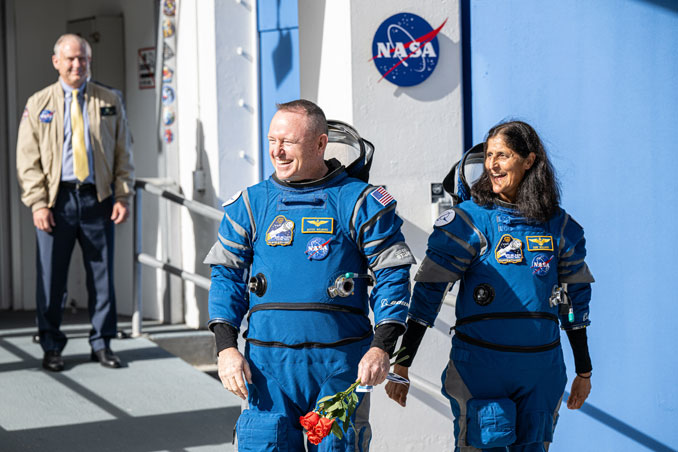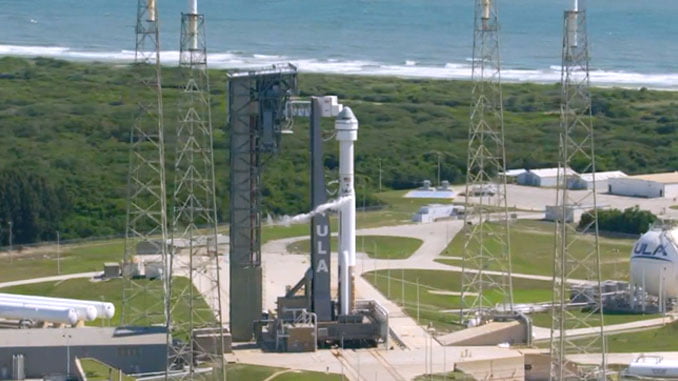NASA will not launch on Sunday delay, putting off Starliner launch until Wednesday
The awe-inspiring Star-crossed Boeing Starliner — within minutes of the long-delayed launch in the spacecraft’s initial test flight piloted by a pilot was shut down again on Saturday when three computers running the countdown at the top on the rocket’s launchpad encountered an issue, prompting an emergency scrub.
Engineers were initially told to get ready for a new launch attempt on Sunday, 12:00 p.m. ET, as long as the issue could be solved by the deadline. However, NASA has since announced that they will not take advantage of the Sunday option to give engineers time to analyze the issue with computers.
Its flight test will docking and rendezvous in conjunction with the International Space Station. Based on the orbit of the lab and the Starliner’s capability keep pace the two next launches after Sunday’s launch will be Wednesday around 10:52 a.m. EDT and Thursday 10:30 a.m. NASA said the agency will release an update on Sunday.
The Starliner’s crew, including commander Barry “Butch” Wilmore and co-pilot Sunita Williams, arrived just two hours after the launch on May 6, but were slowed by a faulty pressure relief valve on the Atlas 5 rocket and a leak of helium in the propulsion module in the spacecraft’s rocket.
The issues were fixed and, following a few minor issues on Saturday the countdown appeared to be advancing smoothly towards an expected launch at 12.25 p.m. (EDT). After 10 seconds, the countdown was released from an anticipated hold at the T-minus 4 minute mark when the clocks abruptly stopped working.
Space Station launches are planned to coincide with the time when Earth’s rotation will bring the pad in the station’s orbit. This is essential for a rendezvous with an object moving at more than five miles per second. Unplanned delays during the countdown process for these missions will immediately result in a of 24 hours delay to launch.
Tory Bruno, CEO of United Launch Alliance, builder of the Atlas 5 rocket, said the problem on Saturday was three computer racks that are located near the base of the launchpad. Each rack is equipped with different systems, which include identical circuit boards that work together as an “ground launch sequencer,” taking care of the final steps in the countdown.
The GLS computers control events such as the retracting of umbilicals as well as the explosion of bolts that remove the rocket from the pad ready for takeoff All three of these must be in perfect harmony in order for a countdown to begin.
In the launch attempt on Saturday, the countdown was truncated to T-minus 4 mins before entering a four-hour delay. The countdown resumed just four minutes before launch, one of the three GLS circuit boards took more time than anticipated to get synced up with the two other. It was able to cause an automatic hold at the T-minus 3 minute 50 seconds.
Engineers were planning to begin troubleshooting following the draining of Atlas 5 Atlas 5 of its liquid hydrogen and oxygen propellants, and getting access to the computing room. The decision about how to proceed was based on identifying the issue, replacing it the suspect component, and evaluating it.
The team behind the launch, though dismayed, accepted the latest delay with a smile.
“You know when you’re playing a game and you get a bad call, you’re a little irritated at first, or a little frustrated at first, but you immediately focus on the next pitch and that’s what our teams do, they’re focused on the next pitch,” said Mark Nappi, Boeing’s Starliner project manager.

“As soon as we went into the launch scrub and launch turnaround, I looked out into the control room and everybody had their heads down, working the procedures to get ready for another attempt tomorrow.”
Bruno: Bruno: “The disappointment lasts approximately three seconds. Then you immediately take off and get to your task. We’ll see you again.”
If it does take off it will be the first launch piloted from the Atlas 5 as well as the very first launch for this rocket in the Atlas group of rockets, since the the astronaut Gordon Cooper took off just two miles away on the Mercury program’s last flight in 61 years ago.
In addition, it will be the first flight piloted by the Starliner Boeing’s response to SpaceX’s Crew Dragon, an already operational spacecraft that has taken 50 cosmonauts, astronauts and civilians to orbit in 13 flights, including 12 on the way to space stations after the piloted first test flight in the month of May, 2020.
NASA helped fund the creation of both spacecrafts to ensure that the agency would be able launch crews to the outpost, even in the event that one ferry ship of a particular company was delayed due to reasons of any kind.
Already a year behind schedule due to budget deficits as well as a host of technical issues which cost Boeing around $1.4 billion to fix, NASA had hoped to launch the Starliner to orbit on May 6. However, the launch was canceled because United Launch Alliance engineers detected problems with the pressure relief valve inside the rocket’s Centaur lower stage.
It was Atlas 5 was hauled off the pad and returned to the ULA’s Vertical Integration Facility, where it was re-integrated into the Vertical Integration Facility. Centaur valve was replaced quickly. In the aftermath of the launch scrub Boeing engineers noticed evidence of a tiny leak of helium inside the propulsion system of the Starliner.
It was found that the leak could be traced back to the flange of plumbing that used pressurized Helium to drive a particular jet in the reaction control system of the service unit of Starliner. The leak was described by the manufacturer as “very small,” but engineers had to prove it wouldn’t significantly worsen during flight, and could cause issues with other thrusters.
After a thorough research and tests, mission officials determined that the spacecraft can be launched with confidence as is, and even the leak rate was 100 times more than the one the ones that have been seen, it would not cause any danger for the astronauts or mission. It turned out that the leak rate was within acceptable limits on Saturday.










